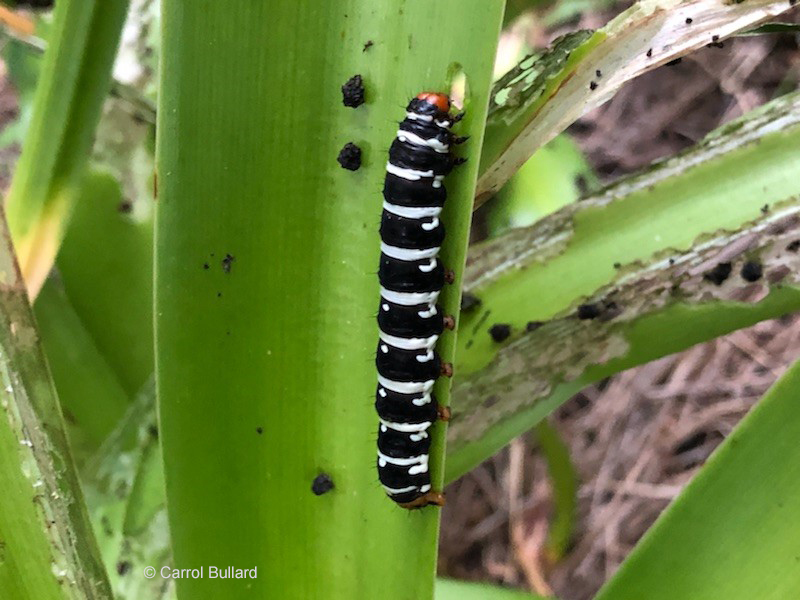Spanish Moth, Vol. 6, No. 18

Spanish Moth
Xanthopastis regnatrix
Order: Lepidoptera
Family: Noctuidae
Spanish moth caterpillars are not very common, but they are easy to identify by their striking appearance and the kinds of plants they eat. Also known as convict caterpillars, these caterpillars feed on plants most other insects avoid, plants with thick, fleshy leaves like lilies and amaryllis. The moths lay eggs in masses, which results in a spotty distribution of caterpillars. Some plants may have dozens of caterpillars and be heavily damaged, while nearby plants are unaffected.
The moths are as unique looking as the caterpillars: pink and black, with distinctive orange markings through the black areas of the wings. This may sound gaudy, but these colors and markings are so tastefully arranged that many consider this to be one of our most beautiful moths.
Plants attacked include amaryllis, spider lilies, crinum lilies, daffodils, and irises. You won’t find many other caterpillars feeding on these plants and you won’t find many other caterpillars with these distinctive black and white stripes. Mature caterpillars are about two inches long and heavy infestations can cause severe defoliation of isolated plantings. If they run out of leaves to eat, they will even feed on exposed portions of bulbs. There are several generations per year, but fortunately, this is a rather uncommon pest.
Control: Spanish moth caterpillars are usually nearing full size and have already eaten a lot of leaf area by the time they are noticed. Spray them with a fast-acting, pyrethroid insecticide such as permethrin (Hi-Yield, etc.), bifenthrin (Ortho Bug-B-Gon) or zeta-cypermethrin (GardenTech Sevin Insect Spray) to prevent further damage.
Thanks to Carol Bullard for sharing this closeup picture she took of one of the Spanish moth caterpillars that were damaging a Milk and Wine crinum lily in her landscape in Panola County.
Blake Layton, Extension Entomology Specialist, Mississippi State University Extension Service.
The information given here is for educational purposes only. Always read and follow current label directions. Specific commercial products are mentioned as examples only and reference to specific products or trade names is made with the understanding that no discrimination is intended to other products that may also be suitable and appropriately labeled.
Mississippi State University is an equal opportunity institution.

